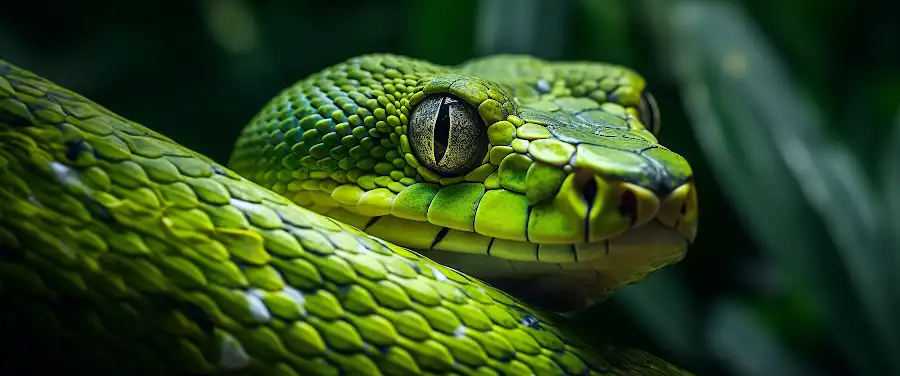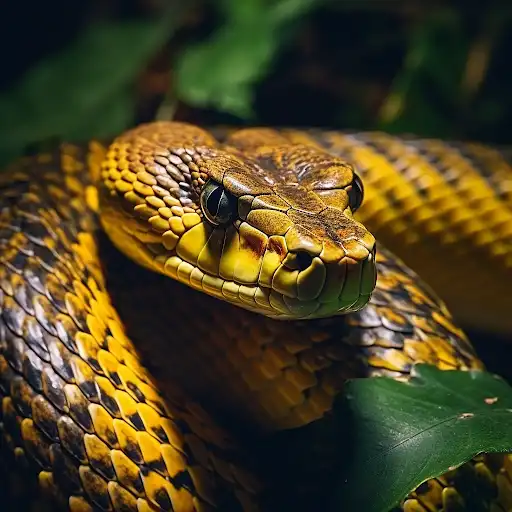
When we think of courageous jobs, our minds often spring to firefighters or astronauts. But there’s a profession that requires equal parts bravery, calmness, and quick thinking – snake removal. Yes, such a job exists, and it’s as vital as ever considering the extent of our interactions with the serpentine creatures. Encountering a snake, be it a harmless corn snake or a potentially lethal rattlesnake, can be a terrifying experience for many folks. More often than not, the serpent is just as scared and simply wants to slither away. But to ensure human and snake safety, a trained professional skilled in the art of snake removal is your best bet.
The need for snake removal skills and techniques is more noteworthy than you might imagine. People who live in regions inhabited by various snake species, or even those who trek into the wilderness, would benefit from understanding the methods for snake control. In addition, professionals in wildlife and pest control, hikers, campers, and even ordinary homeowners often find themselves in situations where they have to face a slithering surprise guest. And don’t for a moment think it’s all about the catch; the emphasis is on humane, risk-free practices that maintain a balanced ecosystem.
This takes us to our comprehensive exploration of snake removal techniques. Allow me to provide some context to the problem; this is about more than simple animal control. It’s a wide-spectrum approach tackling everything from understanding types of snakes, evaluating risks, using appropriate tools and techniques, to handling and releasing the creatures capaciously. The aim? A set of solutions for snake problems so effective, it’s like having an on-call professional right in your backyard! With that said, let’s smoothly slide into a broader discourse on the perception of snakes and why they’re often seen as threats. Get ready to shed your fears and assumptions as you enter the fascinating world of snake removal.
Why is it Necessary to Seek Professional Help for Snake Removal?

So you’ve found a snake in your backyard. Your first instinct might be to remove it yourself–but wait! Before you even think about grabbing your trusty shovel or garden gloves, it’s crucial to understand why it’s necessary to enlist the help of snake removal professionals. This isn’t just about the safety of the snake at stake, but more importantly, it’s about your safety, and the safety of those around you.
Snake removal might seem straightforward, but it’s far from it. Professionals in this field have extensive training and specific equipment for snake removal, which allow them to handle these creatures safely. They have a wealth of knowledge not only on how to wrangle snakes but also on identifying different species and understanding their behaviors.
Knowledge on species identification is especially important because it can dictate the method of removal. For example, venomous snakes should be treated with extra precaution. Around 7,000 people are bitten by venomous snakes in the U.S each year, and about 5 of those bites result in death according to the Centers for Disease Control and Prevention. This is why the identification process is critical before any removal attempt.
Furthermore, there are legal considerations for snake removal. Laws and regulations vary per area. Some states strictly prohibit killing snakes while others may require a permit for snake removal. This is where professionals can navigate through the complexities of the local law, ensuring that the snake removal process is compliant.
Lastly, there are the ecological considerations. Snakes play important roles in local ecosystems by controlling pests. Professional snake removal ensures that ecological balance is maintained while resolving your snake problem.
How are Snake Removal Professionals Trained?
Ever wonder how someone becomes a trained snake remover? It’s a demanding yet rewarding process that involves strict training procedures, gaining varied knowledge, earning certifications, and much more.
The training process includes learning about snake biology, behavior, and various snake removal techniques. Trainees often undergo extensive simulations to practice safe and effective removal methods, making sure to minimize harm to both human and snake.
Knowledge plays a vital role in this field. Professionals often learn about the different species of snakes, their habitats, potential dangers, and most importantly, special precautions required while handling venomous or constrictor snakes.
Earning certifications is a critical part of becoming a professional in snake removal. Certain organizations, such as The National Wildlife Control Operators Association (NWCOA), offer prestigious certifications to denote a high level of competence in this field.
Overall, snake removal is no easy task—it requires a lot of training, knowledge, and the right certification. So, if you ever come across a slithery visitor in your backyard, remember to leave it to the professionals.
Now that you understand the intricacies of professional snake removal, it’s time to dive into some basic knowledge about snakes themselves. This can help you be more aware and prepared in case you ever face a snake situation. So, let’s slither into our next topic, “Gaining Basic Knowledge About Snakes: What Is Essential?”
Gaining Basic Knowledge About Snakes: What Is Essential?

As you begin your journey to master the art of snake removal, the first step is to immerse yourself in the world of these misunderstood creatures. Understanding their habits, traits, and general behaviors is vital to ensure safe and effective snake removal.
Let’s look at the primordial habits and physical traits of snakes. Essentially, these creatures are known for their slithering movements, ability to swallow prey larger than their heads, and their tendency to be most active during the twilight hours. They come in various shapes, sizes, and colors, from the green vine snake to the burly and intimidating anaconda.
Did you know more than 3,000 species of snakes have been identified worldwide? Though, the count in specific regions might vary. Despite this diversity, certain shared behaviors make identifying the presence of a snake possible. For instance, tracks, skin shedding, droppings, and holes may signify a snake’s presence in your vicinity. Understanding these common signs of snake activity allows for quick and timely snake removal.
Now, allow me to introduce the most usual suspects you may come across in your local environment. Acknowledging these common snakes and their behaviors will help you proceed with caution.
What are the Tools Used for Identifying Different Types of Snakes?
Differentiating between venomous and non-venomous snakes is imperative in ensuring your safety during the snake removal process. Observing the snake’s scale, pattern, and coloration can provide essential clues about its species and venom potential. For example, in North America, venomous snakes like rattlesnakes, cottonmouths, and copperheads have triangular heads, while most non-venomous snakes sport more slender, rounded heads.
However, it’s always safer and easier to use handy tools, resources, and guides for accurate snake identification. Websites like Reptile Magazine offer a wealth of information about snake species, making it easier to know what you’re dealing with.
Mastering the art of snake removal isn’t an overnight process, but it starts with understanding these magnificent creatures and approaching them with respect and caution. As we move to the next step, let’s delve into different snake removal techniques and learn what works best!
Deciphering Snake Removal Techniques: What Works?

When it comes to snake removal techniques, it’s essential to understand there’s no one-size-fits-all solution. Various strategies can prove effective; however, the method of snake removal used depends largely on factors such as snake species and the environment. According to the National Wildlife Control Operators Association, approximately 37.5% of all wildlife control service calls between 2010 and 2013 were regarding snakes. These incredible creatures thrive in all kinds of habitats, enhancing the need for unique, suitable snake removal tactics tailored to individual contexts.
What Strategies do Professionals Employ for Snake Removal?
Engaging professional services often leads to the most assured, safe results for snake removal. These experts employ a variety of strategies, tailoring their approach to the individual case circumstances, which demonstrates their professional snake removal strategies. The equipment they utilize, which might include snake tongs, snake hooks, or specialized snake traps, guarantees a safe and humane removal process that concentrates on reducing harm to the reptile and humans involved. Thus, the benefits of professional services extend beyond simple removal to also prioritizing safety and conservation efforts.
How is the Capture and Release Method Implemented?
Among the various removal strategies, the capture and release method finds favor for its humane approach. In this process, individuals safely capture snakes using snake hooks or snake bags, proving their skill in safely capturing snakes. Afterward, these captured snakes are transported out of the populated area in snake bags and boxes to prevent any harm during the transit. Ideal release points include locations far from human residences, where the reptiles can adapt easily. However, releasing snakes into new environments calls for a good understanding of the snake’s habitat and behavior.
Understanding the Trap-and-Removal Technique
The trap-and-removal technique is another method professionals often employ. This method involves setting up and maintaining snake traps to catch the reptiles quietly and safely. When comparing it with other techniques, the trap-and-removal method shines for its passive nature and efficacy. Depending on the scenario, professionals might favor it over other methods. For instance, it yields better results in instances where the snake frequents a specific area or is of a dangerous species.
While snake removal stands crucial for our safety, the use of these techniques should be left to professionals. A mishap in snake handling might lead to an unfortunate incident. The National Institute for Occupational Safety and Health reports that, on average, 5 out of 100,000 full-time workers are injured due to wildlife encounters. Therefore, timely intervention by professionals remains critical.
Safety is of highest priority whether one is dealing with an inquisitive king snake or a potentially dangerous rattlesnake. Moments of shocking surprise tend to turn into panic all too quickly and without proper preparations, situations could easily escalate. In the next section, we will delve deeper into how to navigate these scenarios safely with “Precautionary Measures: How to Stay Safe While Handling Snakes?“.
Conclusion
In wrapping up your journey to mastering the art of snake removal, you’ve armed yourself with valuable techniques that are not only effective, but prioritize safety during snake removal. It’s incredible how you’ve navigated the tricky procedures of snake removal, displaying both intrigue and courage. Your journey doesn’t end here though! Remember, dampness, safe havens, and food supplies are so attractive to these slithery creatures!
Continual education and practicing these snake removal techniques are vital to your success. You have indeed become a walking snake removal education resource! But remember, surprises are part of the game. Some situations will be less predictable than learned scenarios, so be ready to adapt accordingly.
We cannot overemphasize how essential your safety is. Regardless of the snake removal method you use, all safety considerations for snake removal should be strictly followed. Now let’s recap our adventure, from understanding snake behaviors, identifying various snake species, to safely removing them from various environments.
Your confidence and readiness should now be at an all-time high. And if you ever come across someone afraid due to snake infestation, calmly share your techniques and enlighten them about the importance of safe snake removal. This newfound expertise of yours is not only for personal use, but also to help those around you. With that, welcome to the illustrious club of comprehensive snake removers. Now where’s that slithery squatter hiding in your neighborhood?
Here’s to your success and safety, as you endeavor to master and spread knowledge about snake removal. Remember, you have the skills. You have the knowledge. Now, put it to the test. Safe snake hunting!




